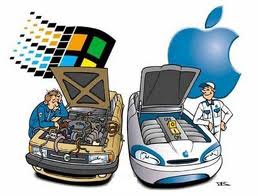While working on your
Mac, you might have experienced it running slower than it usually
does. That annoying spinning beach ball and things responding slower
etc. are denoting your Mac is getting slower and needs optimization
to meet its exact performance level.
Data stored on a hard
drive does not always occupy the memory in a continuous fashion, but
may store in a fragmented manner. This is because large memory blocks
are kept empty and proper logical addresses are not assigned. These
un-occupied memory blocks create internal fragments. On the contrary,
when you delete some data from the same hard drive, it vacates its
current memory location. These memory blocks are of uneven sizes and
cause external fragments in the memory. Mac OS X utilizes a file
system that includes some sort of defragmentation tools and does not
much require any manual drive defragmentation. It has inbuilt memory
maintenance subprograms that exercise frequently and filters out the
fragments to improve the performance of your Mac. It shifts the data
stored at the same drive in order to occupy that vacated location.
Moreover, it monitors the complete hard drive dynamically in order to
unite all small files and arrange them in a collective manner at a
common logical memory location, which automatically defrags the
vacated memory.
To examine, you can go to
the embedded disk management tools i.e. Disk Utility in Mac and see
that it does not include any sort of tool to defrag a hard drive or
even a volume. Mac OS X with a version above 10.2 does not require
any defragmentation, as they include self-monitoring and
self-defragmentation sub-programs that does not let the memory to
fragment whether you save or delete something. Moreover, the file
system (i.e. HFS+ file system) in Mac employs smart memory allocation
mechanism that first allocates already vacated memory to fit up the
data in, thereby leaving recently vacated space that could also have
occupied, but the data had to disunite.
Additionally, the Hot
File Adapting Clustering mechanism employed by Mac OS X monitors the
entire frequently accessed (read-only) files and moves them into a
hot file zone. It defragments all these files while moving and keeps
them into fastest access area on the hard drive. Every opening file
on the drive is checked for fragments, and defragmented, if required.
However, if you still find your Mac running slow and you are not
satisfied with its performance, you can go for the software to defrag
your Mac. Moreover, if you think that the internal mechanism of Mac
is not efficient enough to defrag my Mac, then you can use
defragmentation software for Mac, as these tools remove all internal
as well as external fragments from the hard drive and hence, optimize
Mac performance.




